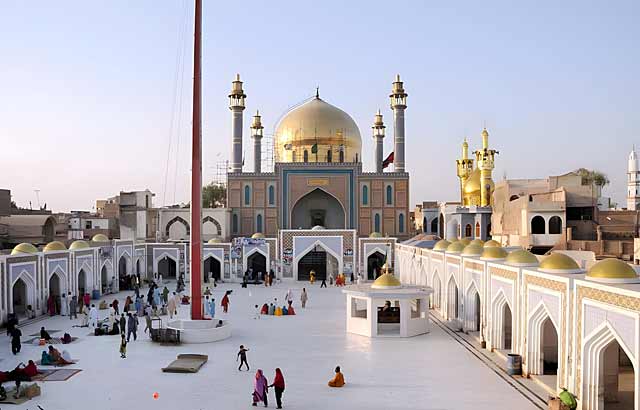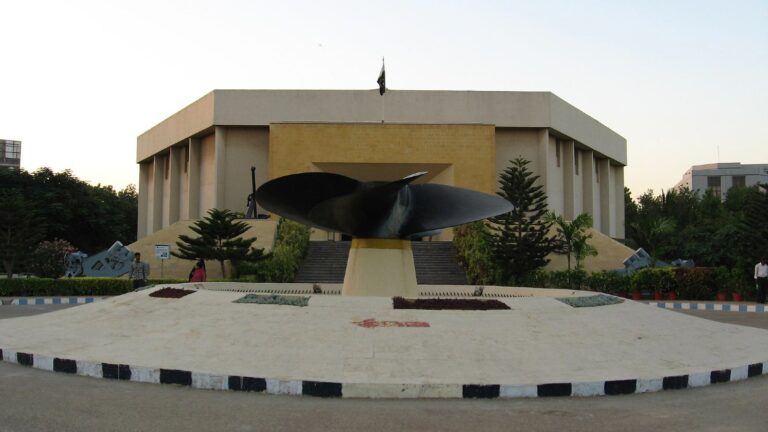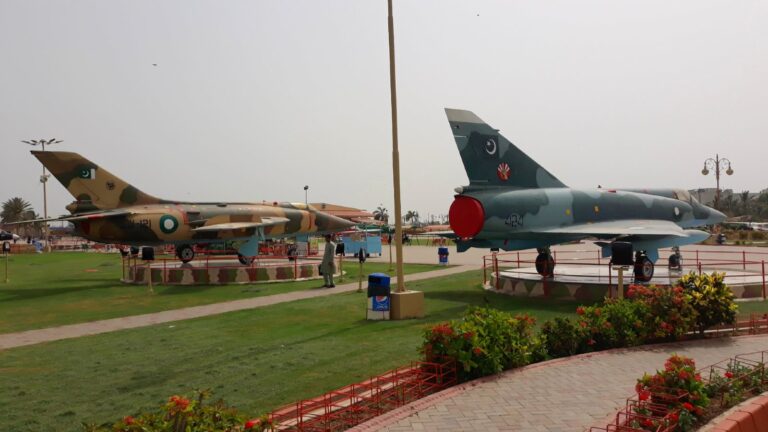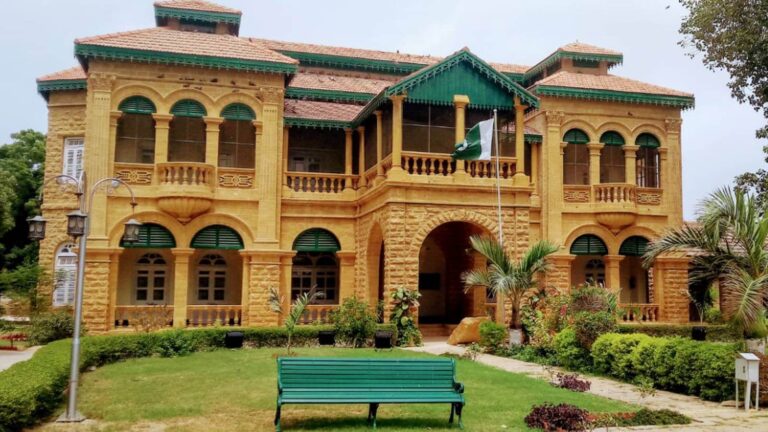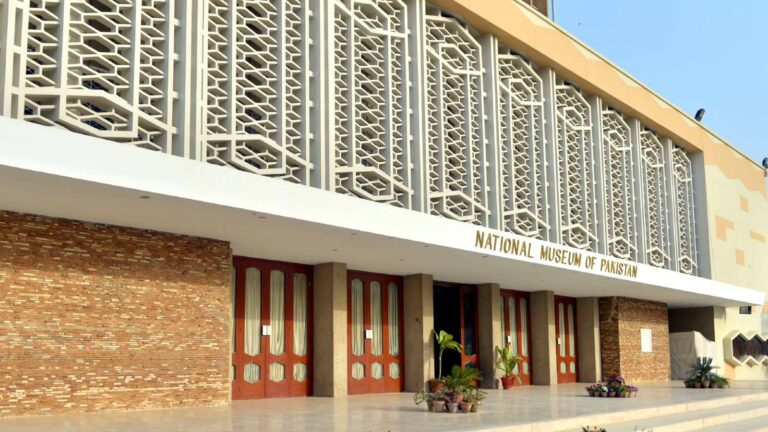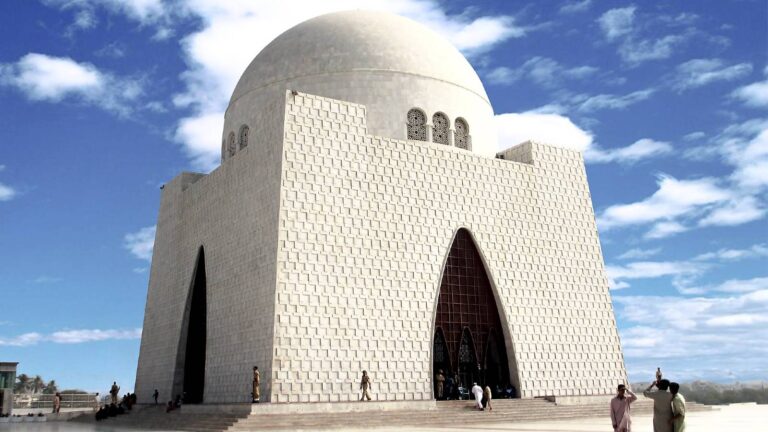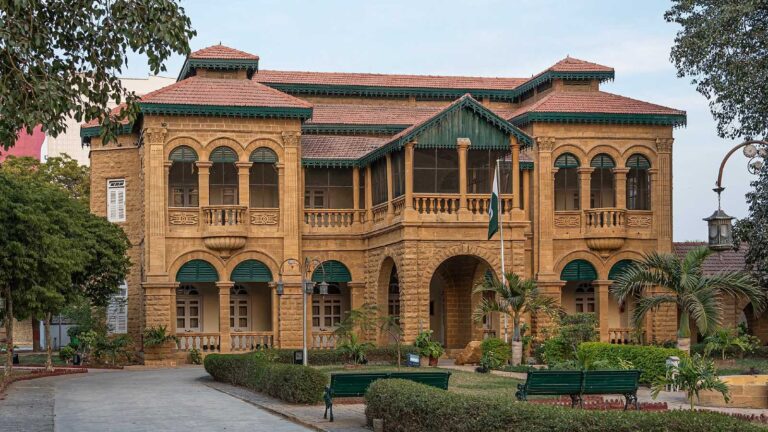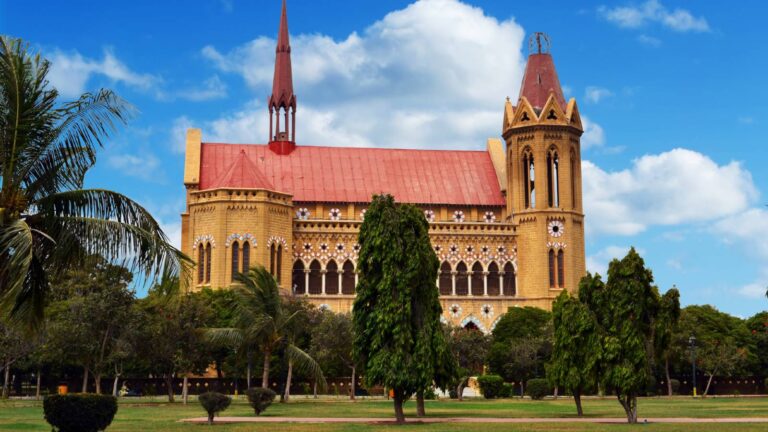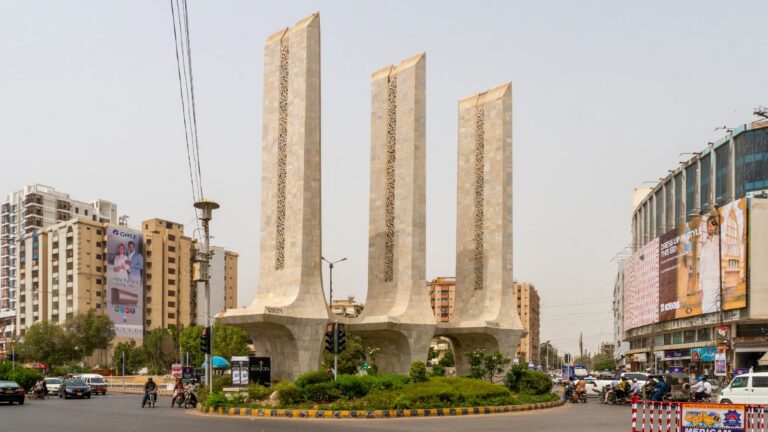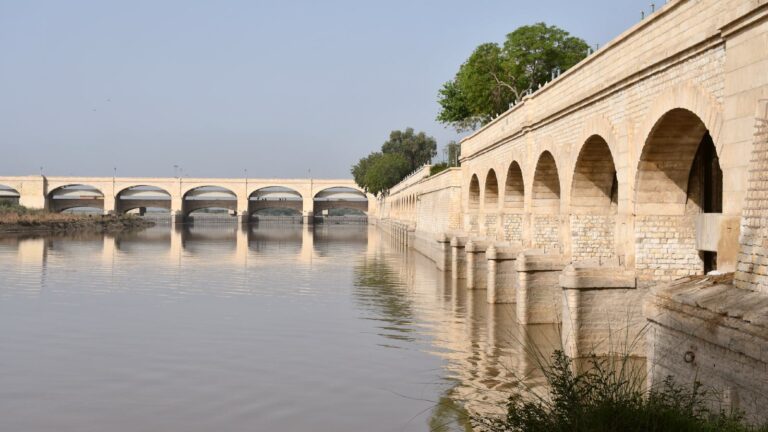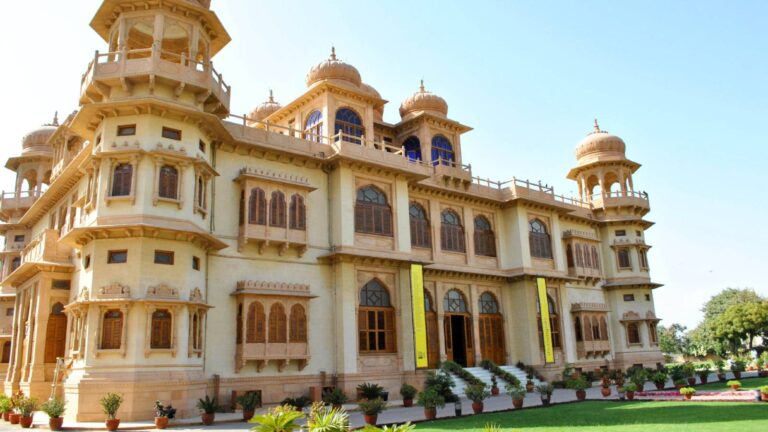Main image: Fassifarooq, Shrine Lal Shahbaz Qalandar, Sehwan Shareef, Sindh, Pakistan, CC BY-SA 4.0
Getting There
Lal Shahbaz Qalandar is located in Sehwan, Jamshoro District, Sindh, 287 KM from Karachi via Hyderabad Motorway.
What to Expect
Lal Shahbaz Qalandaris a masterpiece of Sindhi architecture of Kashi and was constructed in 1356. Its interior is about 100 square yards. This shrine is full of amazing facts. Another interesting thing about this shrine is that a lot of Dhamaal (a special kind of lok dance) sessions are arranged here just to symbolize the protection given to it. People of all age groups participate in it.
The architecture is beautifully comprising of milky white marbles and some extremely beautiful cultural styled mirror work. Its front door is gold plated that is a vision to eyes. The Hindu culture styled small lanterns present a jaw-dropping view near the tomb, under the central dome.
There is a special courtyard for dance performances/Dhamaal. The interior of the building is a mixture of diverse beauty as it’s gold plated tiles are from UAE and interiors from Iran.
History
Hazrat Usman Marwandi, popularly known as Lal Shahbaz Qalandar was a Sufi saint and poet of present-day Pakistan and Afghanistan. Lal Shabaz Qalandar, although from Maiwand in the Afghanistan, whose family came from Baghdad, settled in Sindh and helped many people in converting to Islam and was revered by the local Sindhi population.
Lal Shabaz Qalandar had also been reputed for performing many miracles and was seen as a very holy figure in Sindh. He is called LAL (“ruby-colored”) because of the ruby-like glow on his face/forehead and “Shahbaz” to denote a noble and divine spirit and “Qalandar” as he was a wandering spiritual man.
Lal Shahbaz Qalandar is sometimes called Jhulelal. The term Jhulelal means “red bridegroom”. According to the Garland Encyclopedia, Lal Shabaz Qalandar was referred to as Jhulelal (red bridegroom) because he was promised marriage to a daughter of his friend, but the friend died and later his friend’s son refused to allow the agreed upon marriage, which caused Lal Shabaz Qalandar grief.
The name Shah Hussain was given to Hazrat Lal Shahbaz Qalandar because of his family’s attachment to the King of Martyrs Imam-e-Hussain (A.S.). He showed from his infancy, signs of a deep spiritual nature. It is said that even when very young he had developed occult powers. He knew Quran by heart at the age of seven, and at twenty he was initiated into the Qalandar order. At first HazratLal Shahbaz Qalandar was taught by his mother, and then he went on to Medina (KSA) and spent some time there. From medina he went on to Karbala (Iraq) where he used to look after the Holy Shrine of the King of Martyrs Imam-e-Hussain. He died on 18 Shaaban in Sehwan Sharif.
Facilities Available
Government of Sindh Department Sindh Tourism Development Corporation has furnished a facility of Guest Houses for Visitors.

